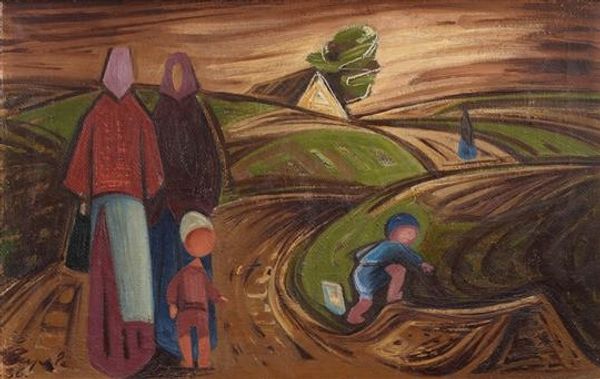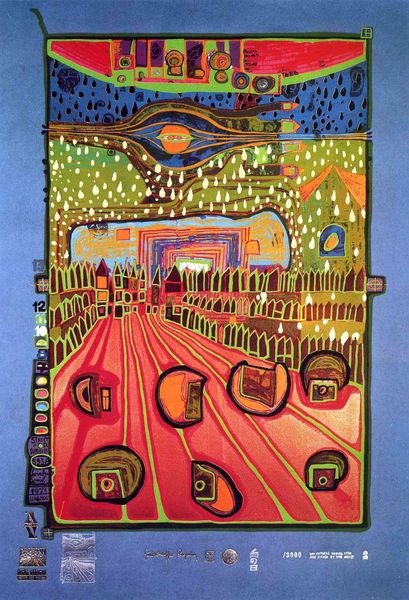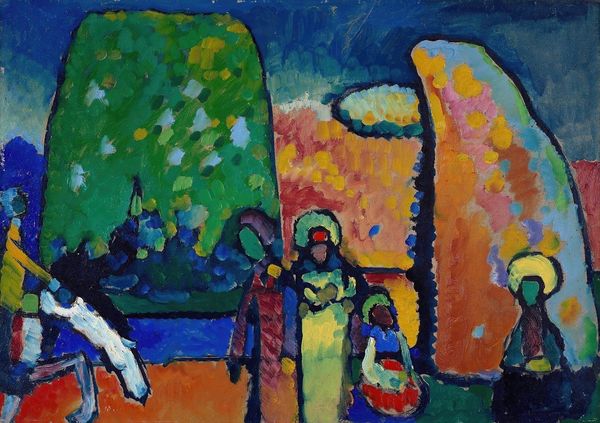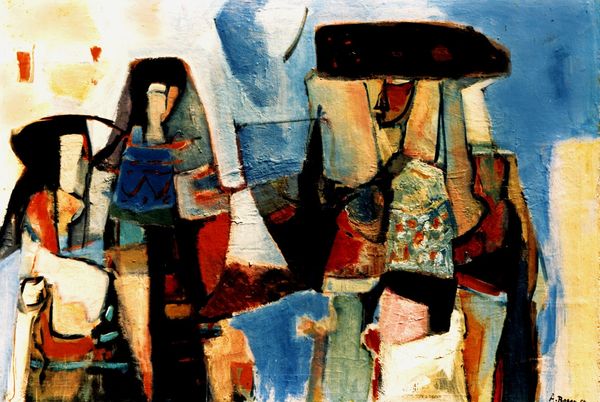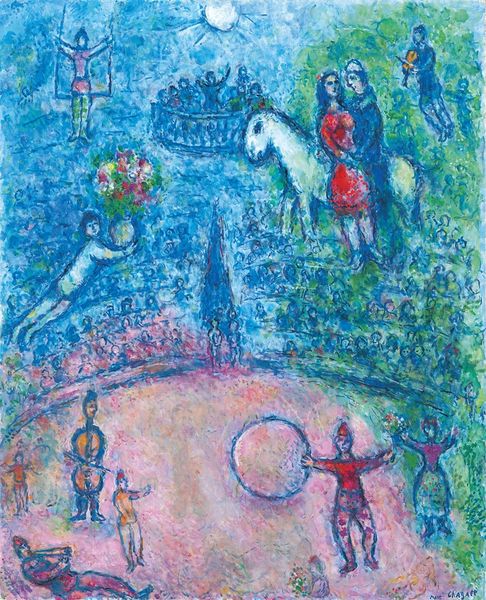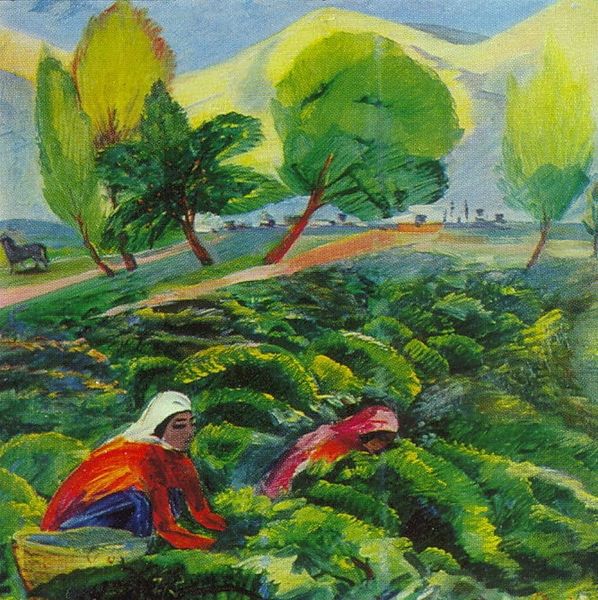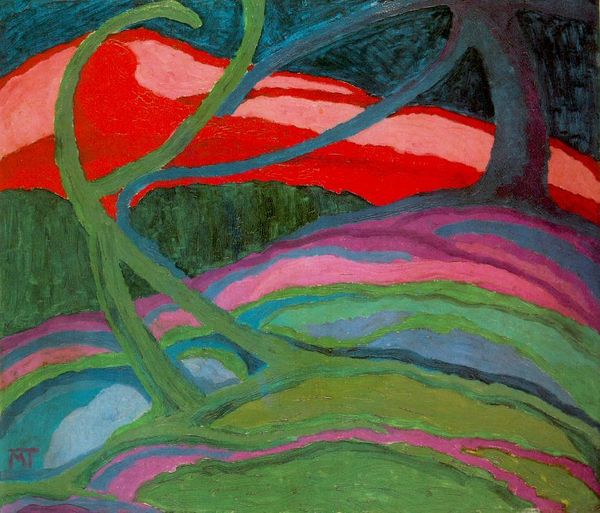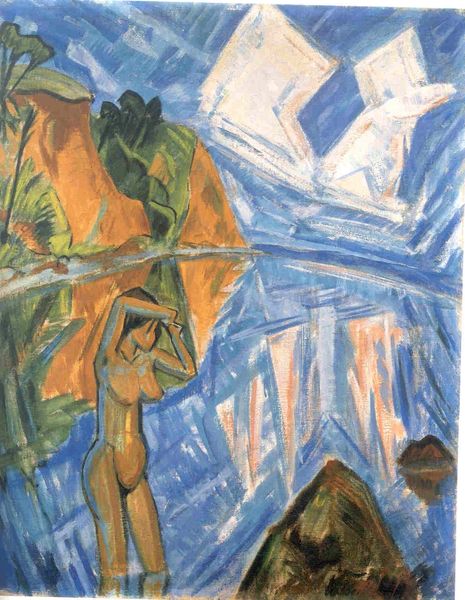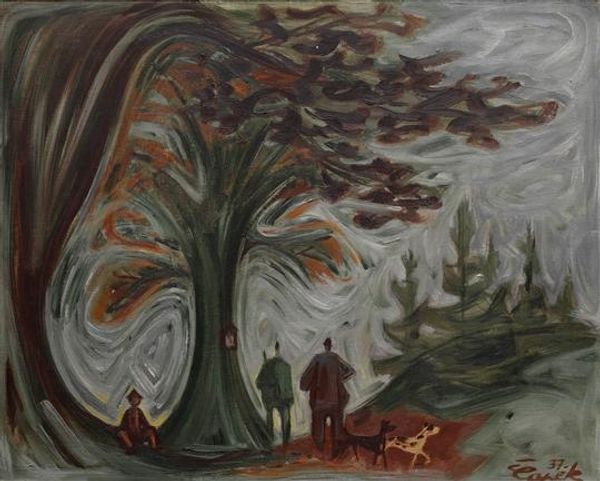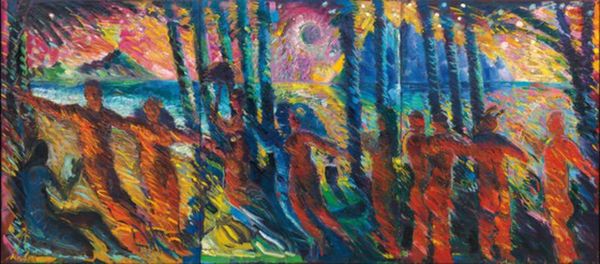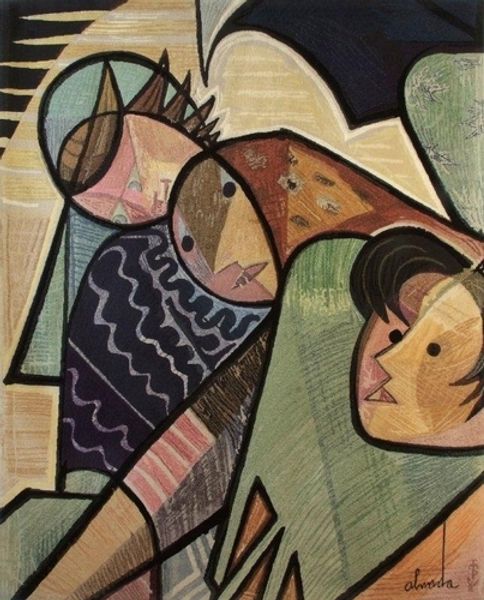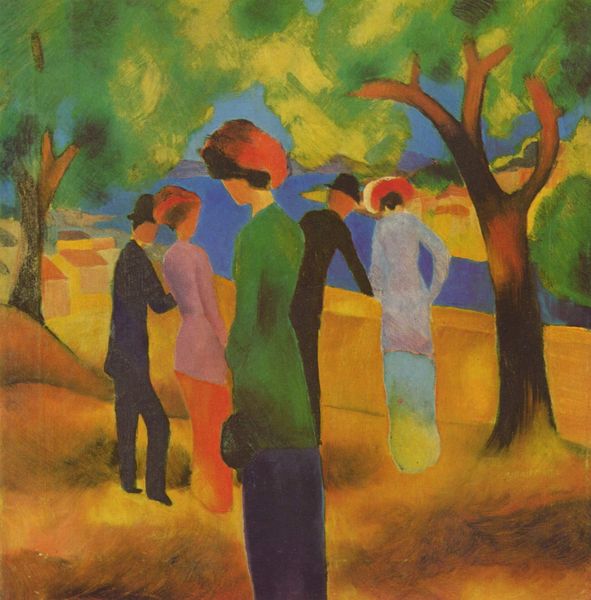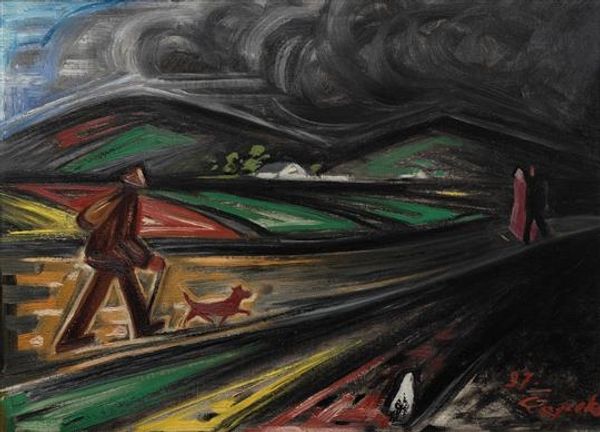
Copyright: Public domain
Curator: At first glance, it feels almost like a painting pulled from a dream. There's something unsettling and compelling about the swirling landscape and the anonymous figures. Editor: We are looking at Josef Capek’s 1937 oil painting, "Landscape with Cross and Doves". Capek was a Czech artist heavily involved in the avant-garde movements of his time. It’s interesting to consider the materiality of that paint itself in rendering this dream-like state. Curator: Definitely. The way the oil paint is applied, thick and almost violently swirled, amplifies that feeling of unease. It's expressionistic, perhaps reflecting the turbulent political climate of the time, hinting at what would happen to the artist during the war. Editor: Precisely. Think about the social context—this piece was created on the eve of World War II. The title includes both "cross" and "doves"—religious symbolism mingling with symbols of peace and perhaps futility given the march to war. That intersection plays out across the canvas, and also points toward a national identity being built with new meaning in crisis. Curator: And the palette – the fiery red sky contrasting with the dark blues and greens. It creates a dramatic tension, doesn’t it? I see the landscape as mirroring the internal turmoil. Are those figures meant to be a family group? Editor: The figures, rendered so simply, certainly evoke the idea of a family on a journey. Their anonymity could represent a collective experience, a mass movement, or maybe even forced migration in times of turmoil, something particularly relevant to Capek and so many others across Europe in that moment. But consider that, to me, that lack of distinct detail might also relate to the artistic trends of the era in portraiture or figuration generally? Curator: That is a fascinating point! Their placement within that intensely rendered landscape truly places them into a grand, historically fraught moment, almost as stage actors in their own world's drama. Editor: This piece really compels us to think about art’s public role during moments of social upheaval. Capek's work serves as a potent reminder of how artistic expression responds to and shapes our understanding of historical events. Curator: Absolutely. I keep coming back to the expressive materiality of it all - how Capek used paint to evoke a palpable sense of anxiety. That expressive style itself is testament to an emotionally driven artistic production, something deeply resonant to this day.
Comments
No comments
Be the first to comment and join the conversation on the ultimate creative platform.
